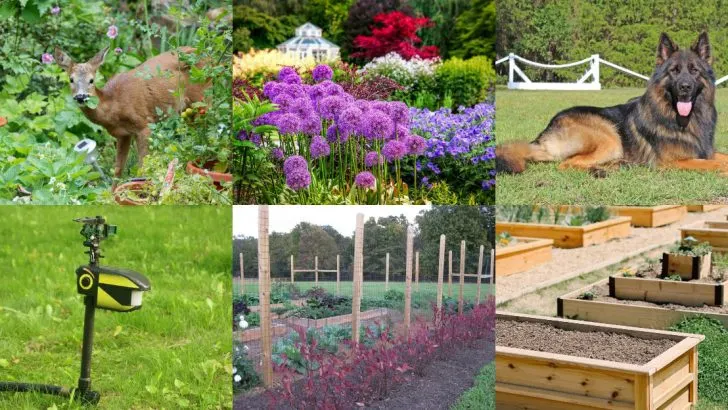Deer may look innocent, but don’t be fooled—they’re garden wrecking machines. One day, your flowers and vegetables are thriving.
The next, it’s as if a tiny tornado swept through, leaving only chewed stems and crushed dreams behind. If you’ve ever woken up to a plant massacre, you know the heartbreak.
But you don’t have to surrender your garden to these hungry invaders. With the right tricks, you can outsmart them, sending them elsewhere for their midnight snacks.
From clever barriers to plants they won’t touch, these 16 tips will help you reclaim your garden and keep it deer-free.
Install Fencing
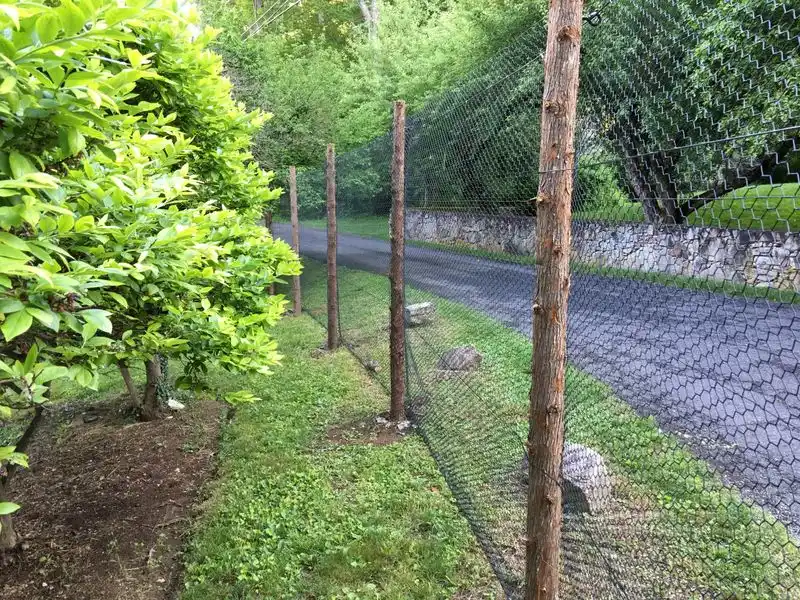
A garden fence often represents the first line of defense. Opt for a fence that stands at least eight feet tall, which is the minimum height to deter most deer.
Material choice is crucial; wire mesh or polypropylene offers durability and visibility. Consider adding a gate lock to prevent accidental openings.
For those seeking aesthetic appeal, a wooden fence can blend beautifully with the garden landscape. Always ensure the fence is properly anchored to withstand curious deer and harsh weather conditions.
Regular maintenance checks will help identify any potential breaches in the barrier.
Use Deer-Resistant Plants

Choosing plants that naturally repel deer can save both time and effort. Varieties like lavender, marigolds, and daffodils tend to be less appealing due to their strong scents or toxic properties.
Incorporating these into your garden’s layout can create a natural deterrent. Diversify plantings to prevent deer from becoming accustomed to any single type.
Additionally, using native species can bolster resistance, as they are well-adapted to local pests and conditions. While no plant is entirely deer-proof, these options significantly reduce the likelihood of unwanted grazing.
Apply Homemade Repellents
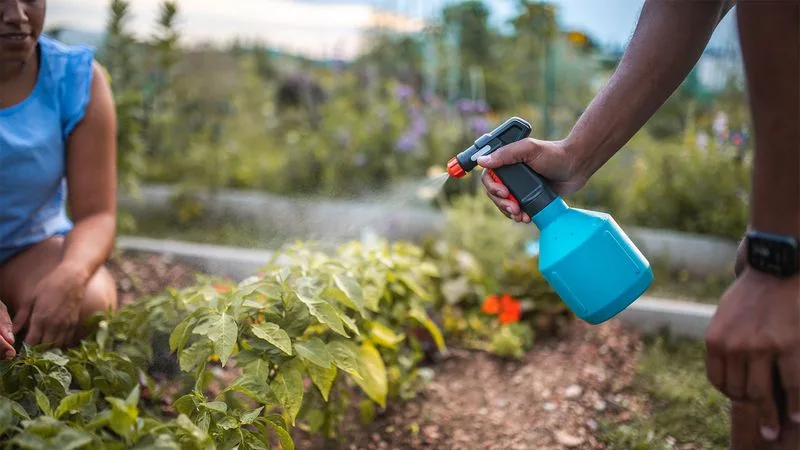
Crafting homemade repellents offers a cost-effective solution. Ingredients like garlic, hot pepper, or raw eggs mixed with water create a potent spray that deer find unappealing.
Apply generously to plants, especially during the vulnerable spring months. Regular reapplication, particularly after rain, ensures consistent deterrence.
Experiment with different recipes to find the most effective blend for your garden. If you’re aiming for an organic approach, ensure ingredients are safe for all garden inhabitants.
Homemade solutions are ideal for those wanting to personalize their garden care routine.
Install Motion-Activated Sprinklers
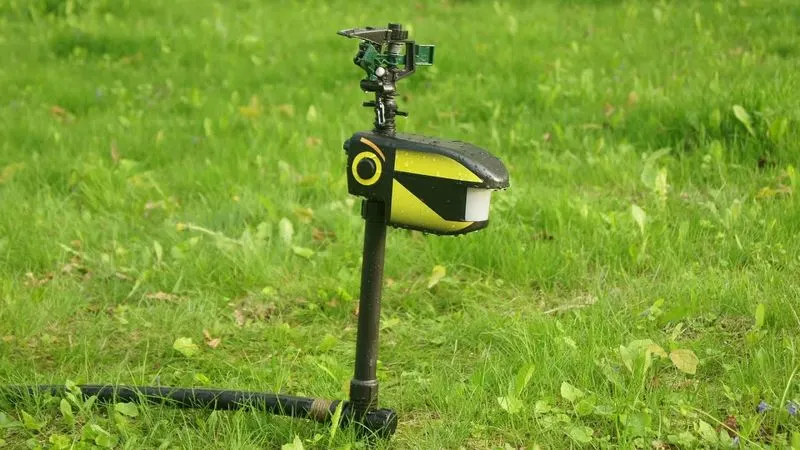
Motion-activated sprinklers can startle deer, disrupting their feeding without causing harm. These devices detect movement and release a sudden burst of water, encouraging animals to seek food elsewhere.
Position sprinklers strategically near vulnerable plants or entry points. Coverage can be optimized by adjusting the angle and range settings.
While this method requires upfront investment, it can be an effective long-term solution for persistent deer problems. Regularly check sensors and water supply to maintain functionality.
Combining this with other deterrents can enhance effectiveness, providing multifaceted protection for your garden.
Create Physical Barriers with Netting

Netting offers a practical alternative to traditional fencing. Lightweight and less intrusive, it can be draped over plants or used to create temporary enclosures.
Select netting with a fine mesh to prevent deer from entangling their antlers. Installation is straightforward and can be adjusted as needed.
This method is particularly useful for protecting young plants or during peak deer activity seasons. Though not a permanent solution, netting provides an immediate deterrent with minimal impact on garden aesthetics.
Frequent inspections are necessary to ensure it remains intact and effective.
Plant in Raised Beds

Raised beds elevate plants beyond a deer’s typical reach. Constructing these beds from sturdy materials like wood or stone adds both height and a physical barrier.
Fill them with soil that’s rich in nutrients to ensure healthy plant growth. The elevation can deter not just deer, but other ground-dwelling pests.
Additionally, raised beds offer gardeners easier access for planting and maintenance. When planning your garden layout, consider integrating raised beds to protect specific, vulnerable crops.
Their structured appearance can also add an element of order and design to your garden.
Use Scent-Based Deterrents
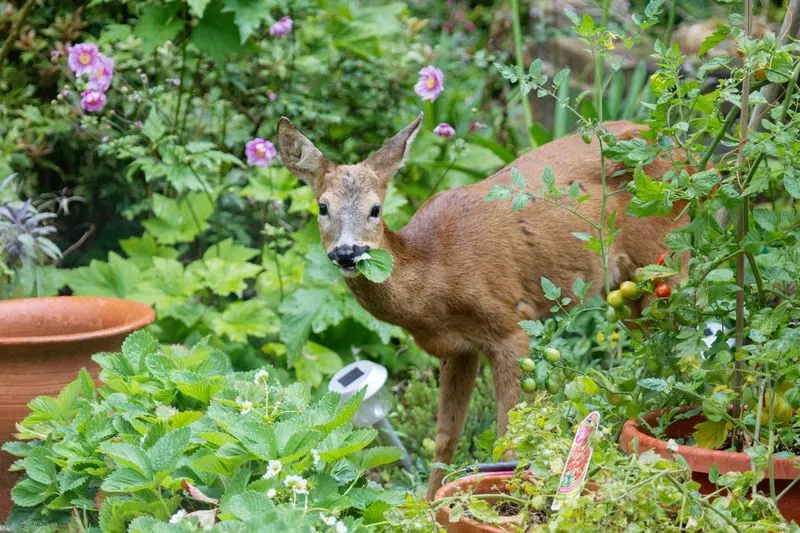
Scent-based deterrents can confuse and repel deer. Items like human hair, soap bars, or commercial scent repellents can be strategically placed around the garden.
These smells interfere with a deer’s acute sense of smell, making your garden less appealing. Replenish or replace these scents regularly to maintain their effectiveness.
Combining different scents can enhance results, as deer may adapt to a single odor over time. This low-cost approach complements other protective measures.
Keep in mind, frequent garden checks are necessary to ensure these deterrents remain potent and properly positioned.
Employ a Guard Animal

Certain animals, such as dogs, can be effective deer deterrents. A well-trained dog patrolling your garden can ward off potential intruders.
Breeds known for their vigilance, such as Border Collies or Australian Shepherds, excel in this role. If opting for a dog, ensure they have access to shade and water, especially in summer.
This approach adds an element of companionship while safeguarding your plants. Other animals, like llamas or donkeys, have also been used effectively on larger properties.
Always consider the needs and temperament of the animal to ensure a harmonious garden environment.
Hang Reflective Objects

Reflective objects can create visual disturbances that deter deer. Hang items like old CDs, aluminum foil strips, or wind chimes in trees and shrubs.
The reflected light and movement can confuse or startle deer, discouraging them from entering your garden. Adjust placements periodically to prevent habituation.
This inexpensive tactic leverages light and motion to protect your plants. It’s especially effective in areas prone to dusk or dawn deer activity.
Combine with auditory deterrents for enhanced results. While simple, this method can contribute significantly to a comprehensive deer management strategy.
Set Up Noise Makers

Auditory deterrents, such as wind chimes or bells, can keep deer at bay. The unexpected noises disrupt their natural sense of calm, making them wary of approaching.
Arrange these noisemakers at varying heights and locations around your garden. Changes in wind patterns will alter the sound, adding unpredictability to the deterrent.
For best results, combine with visual or scent-based methods. While constant noise may not be ideal for all gardeners, these devices are a low-cost, low-maintenance addition to your defensive arsenal.
Keep them well-tuned for consistent performance.
Apply Commercial Deer Repellents
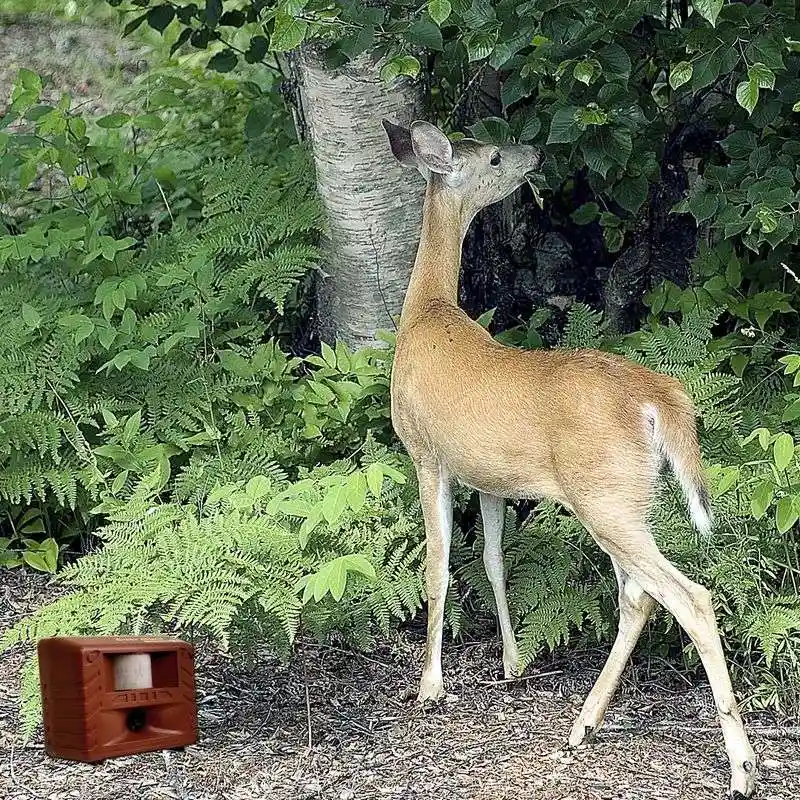
Commercial repellents offer a ready-made solution backed by research. Available in spray or granular forms, these products are easy to apply directly to foliage or the garden perimeter.
Regular applications, especially after rain, ensure the repellent remains active. Choose products that are safe for pets and humans, and follow label instructions carefully.
These repellents often combine scent and taste deterrents, providing a multi-sensory defense against deer. Ideal for those seeking convenience, commercial options can support other preventive measures.
Always monitor plant health and repellent efficacy, adjusting strategies as needed.
Install a Double Fence
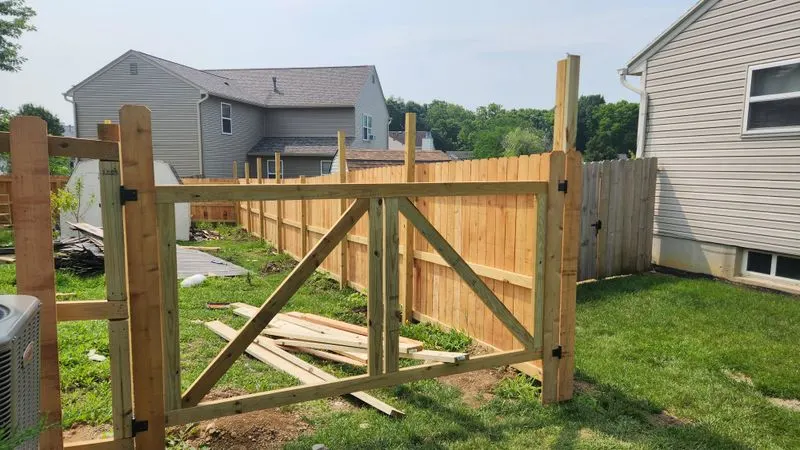
A double fence creates a depth illusion that can confuse deer. Install two fences about three to five feet apart.
The narrow space deters deer from jumping over both barriers. Choose sturdy materials to withstand attempts by persistent deer.
This method works well for expansive gardens where aesthetics allow for additional fencing. Ensure regular inspections to maintain the integrity of both fences.
Although it requires more effort and resources than a single fence, the double barrier provides added security. Consider this strategy for areas with high deer populations and frequent invasions.
Use Companion Planting
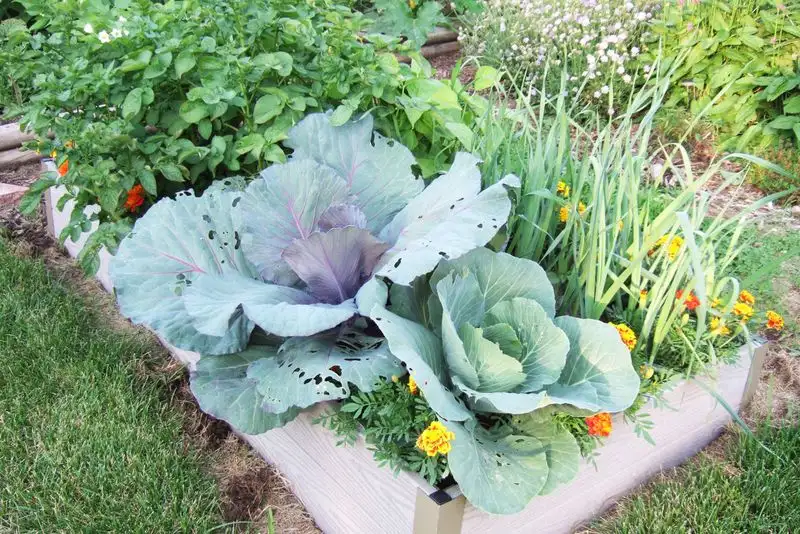
Companion planting strategically combines plants that benefit each other. Some plants, like onions and garlic, emit odors that repel deer.
Surround vulnerable crops with these natural deterrents to create a protective barrier. This approach not only shields your garden but also enhances biodiversity.
Additionally, companion planting can optimize space and improve soil health. Research ideal pairings to maximize benefits, focusing on those proven to deter deer.
Rotate plantings seasonally to maintain effectiveness. This holistic approach integrates seamlessly with other protective measures, contributing to a thriving, resilient garden ecosystem.
Employ a Vegetable Garden Cage

A vegetable garden cage encloses plants, offering comprehensive protection. Construct cages from materials like wire or PVC, ensuring they are tall enough to deter deer.
Include a door for easy access, securing it to prevent accidental openings. This robust solution is suitable for smaller gardens or specific high-value crops.
Cages also protect against other pests, such as rabbits or birds. While they may alter the garden’s appearance, the security they provide is unmatched.
Regular maintenance checks will keep these structures effective over time. Ideal for gardeners prioritizing plant safety above aesthetics.
Use Electronic Deer Deterrents
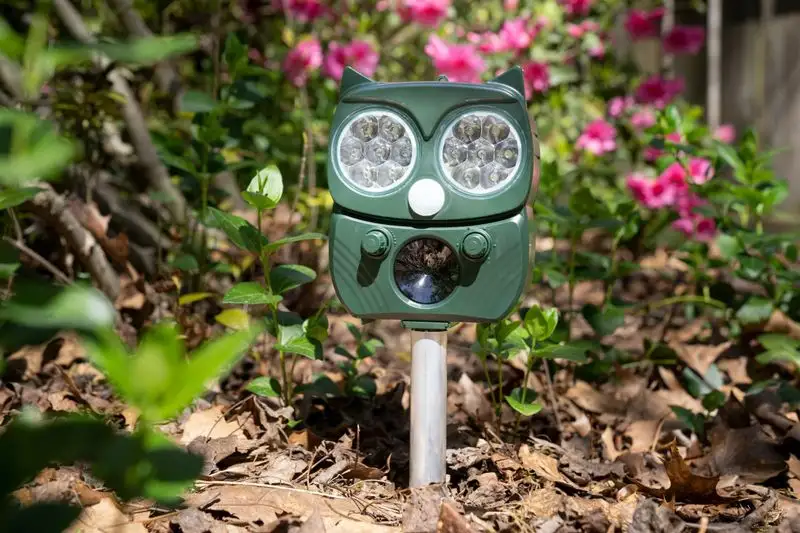
Electronic deterrents utilize technology to keep deer at bay. Devices emitting ultrasonic sounds or flashing lights can unsettle deer, discouraging their presence.
Solar-powered options reduce energy costs and are environmentally friendly. Position these devices strategically, focusing on entry points and vulnerable areas.
Adjust settings for optimal coverage, adapting to seasonal changes and deer behavior. Regularly check and maintain devices to ensure continuous operation.
While initial costs can be higher, these gadgets offer a modern, effective solution for tech-savvy gardeners. They complement traditional methods, creating a layered defense strategy.
Rotate Deterrent Strategies
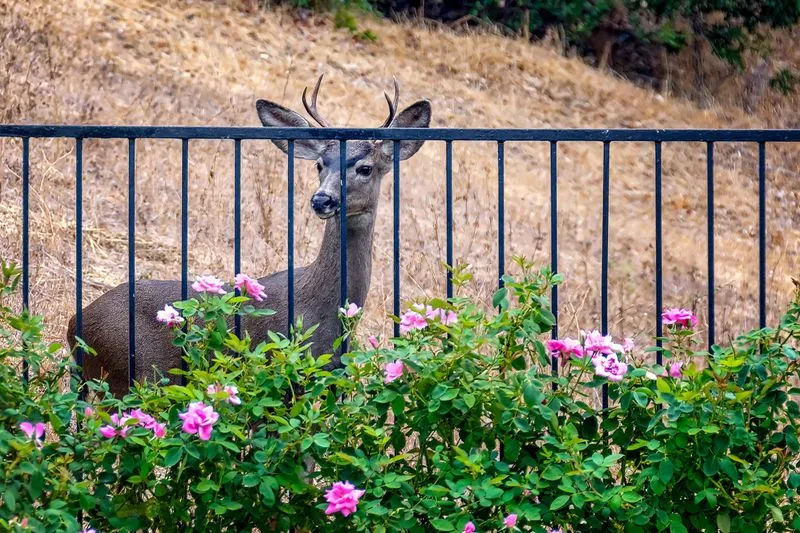
Deer quickly adapt to static deterrents. Rotating strategies keeps them guessing, ensuring long-term protection.
Combine different methods, such as scent-based, visual, and physical barriers, switching them periodically. This unpredictability makes it harder for deer to develop a routine, reducing garden invasions.
Tailor rotations to seasonal changes, as deer behavior shifts throughout the year. Document what works best for your specific environment, adjusting as needed.
This dynamic approach not only confuses deer but also enables gardeners to identify the most effective deterrents. Flexibility is key to maintaining a deer-free garden.

